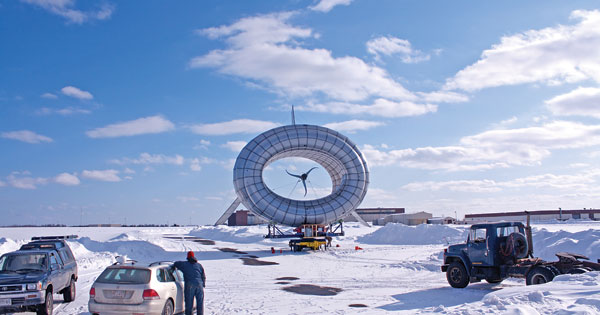
The choicest altitudes for harvesting wind energy are beyond the reach of conventional wind turbines, yet one climate scientist, Ken Caldeira of Stanford University, believes these blustery elevations could power the entire world.
To tap into gusts higher than the 100-to-300-foot height of typical land-bound turbines, MIT graduate Ben Glass invented the Buoyant Airborne Turbine, the first floating wind harvester that can capture turbulence at altitudes of 1,000 to 2,000 feet. Winds up there can blow eight times stronger than those down here. The BAT, now produced by Altaeros Energies (Glass’s startup), employs a traditional turbine encased in a round, helium-filled shell made of the same gas-tight and durable fabric as blimps. BAT’s self-adjusting tethers conduct harvested energy down to a trailer-mounted grounding station.
“Lifting a wind turbine with an inflatable significantly reduces the time and logistical cost of installation” compared with traditional wind turbines, says Altaeros business manager Ryan Holy. That potentially makes the BAT, which is set for commercial deployment in Alaska in 2016, a power solution for sparsely populated areas, for off-grid locales that rely on diesel generators, for areas hit by natural disasters, and—perhaps most consequential—for providing low-cost electricity to communities around the world that lack access to modern energy supplies.
Caldeira sees the technology’s promise in such situations, adding that the BAT probably would not be ideal for obtaining power from jet streams due to the drag of the balloon.

